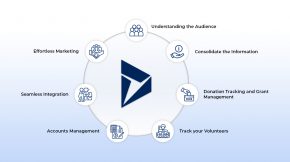The world has turned digital, making everything simpler and more accessible. Especially if we look from the perspective of an organisation, digitalisation has immensely helped. But everything has two sides to it. The Internet has a set of banes that simply cannot be ignored – the biggest one being cyber threats. That’s why organisations need to adopt security measures so that they can safeguard themselves. Two such security measures that are prevalent today are penetration testing and vulnerability scanning.
In this blog, we will talk about these two methods, majorly covering penetration testing vs vulnerability scanning.
As this is the need of the hour, more and more organisations are getting serious about cybersecurity. That’s why the demand for cybersecurity knowledge and services is increasing. So, if you are curious as to what is vulnerability and penetration testing, let’s find out.
Penetration Testing Vs Vulnerability Scanning
In the intricate dance between cybersecurity and cyber threats, organisations must employ a multifaceted approach to safeguard their digital assets. Two indispensable practices within this realm are vulnerability scanning and penetration testing. Although often used interchangeably, these terms encapsulate distinct methodologies. Each of them contributes uniquely to the overarching goal of fortifying digital fortresses. We will look into the nuances of vulnerability scanning and penetration testing. This will help unravel their practical applications, industry standards, and the associated costs and benefits.
Before we dig into vulnerability testing vs penetration testing, it is important to understand what exactly these cybersecurity practices are.
Vulnerability Scanning: Probing the Surface
Imagine vulnerability scanning as the equivalent of a routine health check for your digital infrastructure. It involves the systematic use of automated tools to scan networks, systems, and applications. This practice enables you to uncover potential weaknesses or vulnerabilities. These vulnerabilities may stem from outdated software, misconfigurations, or unpatched security flaws. The primary objective of vulnerability scanning is to compile a complete list of these weaknesses. This provides organisations with a roadmap to shore up their defences.
What is VPAT?
Beyond Key Vulnerability Assessment Services helps shed light on the weak links in your organisation’s network system. It uses VAPT Testing (Vulnerability Assessment and Penetration Testing) that keeps hackers and unauthorised third parties away. Here is what all the software does –
- Web Application Assessment: The software examines the connection between your applications and other programs to eliminate the bugs. This is done before the website turns live.
- Mobile Application Assessment: Your mobile application is digitally scanned to design a detailed model. This is done for penetration testing so that there are no bugs in the mobile functioning.
- Server and Endpoint: This assessment checks the weak spots in your cyber platform and updates all the worn-out operating systems and applications.
- Infrastructure and Network: The process digs out any security gaps and flaws hidden in the corners.
Practical Tips for Effective Vulnerability Scanning
While conducting vulnerability scanning for your organisation, you can follow some tips for better results.
- Scheduled Scans: Regularly schedule vulnerability scans to maintain an up-to-date inventory of potential threats.
- Risk Prioritisation: Categorise and prioritise vulnerabilities based on their severity to address the most critical issues first.
Industry Standards and Benchmarks
The Common Vulnerability Scoring System (CVSS) serves as a widely accepted framework in the realm of vulnerability assessment. It is used for assessing and rating the severity of identified vulnerabilities. By leveraging CVSS, organisations can systematically categorise and prioritise their response efforts. This ensures a targeted and efficient approach to vulnerability management.
Penetration Testing: Simulating Real-World Threats
While vulnerability scanning provides a snapshot of potential weaknesses, penetration testing takes a more hands-on approach. It simulates a real-world cyberattack scenario. The practice involves actively exploiting vulnerabilities in a controlled environment to assess the resilience of a system or network. Unlike the automated nature of vulnerability scanning, penetration testing is a manual, in-depth process. It mirrors the tactics and techniques employed by potential adversaries.
Beyond Intranet Penetration Services is the focal point to dig out the vulnerabilities before the attackers do.
Practical Tips for Effective Penetration Testing
- Define Objectives Clearly: Before initiating a penetration test, clearly define the scope and objectives to ensure a focused and productive assessment.
- Engage Expertise: Collaborate with experienced penetration testers who can emulate sophisticated attack scenarios, providing a realistic evaluation of security measures.
Industry Standards and Frameworks
The Penetration Testing Execution Standard (PTES) serves as a guide for organisations seeking to conduct penetration tests. By adhering to the principles outlined in PTES, businesses can ensure a systematic and thorough approach. It helps in penetration testing, covering all facets of their digital infrastructure.
Relationship with Industry Standards and Rules
Both vulnerability scanning and penetration testing play pivotal roles in helping organisations meet industry regulations and standards. Sectors such as finance, healthcare, and government often have specific cybersecurity requirements. Regular vulnerability and penetration testing demonstrate a commitment to maintaining a robust cybersecurity posture. It also aids in meeting compliance mandates, mitigating potential legal and financial repercussions.
Penetration Testing Vs Vulnerability Scanning: What’s the Difference?
Learning vulnerability assessment vs penetration testing is important to decide for your network security system.
Inclusion
- Vulnerability Scanning: This practice involves continuous monitoring, assessments, and remediations. It can miss out on complex and critical vulnerabilities at times.
- Penetration Testing: This practice is more comprehensive. It aims to test and exploit the found vulnerabilities. All the errors that remained undetected earlier can be dug out here.
Costs
- Vulnerability Scanning Tools: These tools are often more cost-effective and can be automated, minimising the need for extensive human intervention.
- Penetration Testing: As a manual process requiring specialised expertise, penetration testing tends to be more resource-intensive and may incur higher costs.
Benefits
- Vulnerability Scanning: Provides a proactive approach to identifying and remediating weaknesses, enabling organisations to stay ahead of potential threats.
- Penetration Testing: Offers a realistic simulation of cyber threats, uncovering vulnerabilities that automated tools might overlook. This simulation aids organisations in strengthening their defences against sophisticated attacks.
Scope of Error
- Vulnerability Scanning: This is an automated process and that’s why the chances of getting zero false positives are almost non-existent.
- Penetration Testing: Manual testers are used due to which there are no false positives.
Conclusion: The Synergy of Scanning and Testing
The journey toward a resilient cybersecurity posture demands a holistic approach. It should combine the strengths of vulnerability scanning and penetration testing. Vulnerability scanning serves as the reconnaissance phase, identifying potential weaknesses and providing a roadmap for remediation. Penetration testing, in turn, plunges into the depths, simulating real-world threats to assess the robustness of defences. By learning the difference between vulnerability scanning and penetration testing, you can do what’s best for the organisation. Beyond Intranet cyber security services brings you both the solutions for a robust security system in place.




















